“As an architect, I’m ashamed of what my fellow professionals and I have done during the last fifty years. What do we do? Look around you: America’s best land: destroyed, nature: crushed under buildings and parking lots, resources: squandered, energy: wasted. The saddest part is that we know better and still do nothing about it. We actually know how to build without destroying land.” — Malcolm Wells.
Amazing Underground Homes Around The World
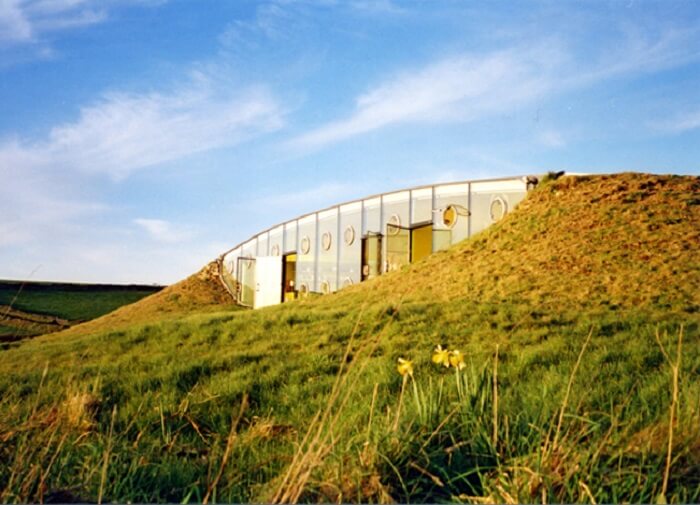
Malator Earth House in Druidston, Pembrokeshire, Wales, built in 1998 and designed by architects Future Systems for a former Member of Parliament. Winds flow right over her. The home is known locally as the Teletubby house. www.ala.uk.com

The roof of the Malator house is entirely covered in local grasses and the bulk of the home closely imitates the neighboring hills. From above, the house is invisible. www.ala.uk.com
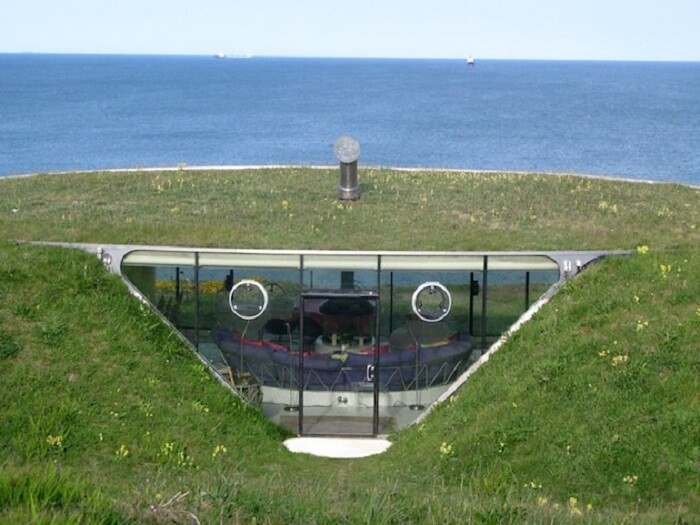
Malator Earth House is barely noticable from the road. storiesofhouses.blogspot.com
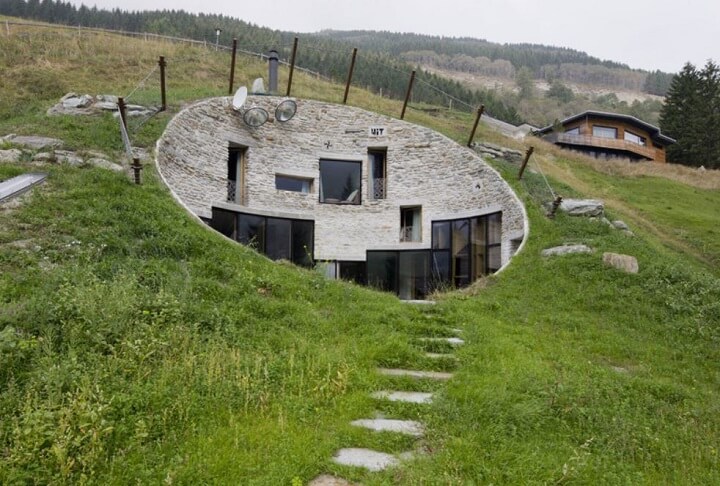
Villa Vals, Switzerland.
The surrounding landscape was left undisturbed and unobstructed by any sort of architectural bump. The three upper bedrooms are flooded with light and views. The first floor includes the kitchen, living room and bedroom that doubles as a library. The villa is thermally insulated and features ground source heat pump, radiant floors, heat exchanger and uses only hydroelectric power generated by the nearby reservoir. SeARCH and CMA: www.search.nl
This 1500 sq. ft. underground house in New Zealand is build from earth and timber. The goal is to be completely self-reliant, growing all food, storing water, and making all energy. The builder, Neil, wants the home to be a model for other home builders. Most of the building has been done with vacationing volunteers with no building experience looking for a place to stay for a couple of days—some had never even used a hammer before. The project has been almost entirely waste and chemical free.
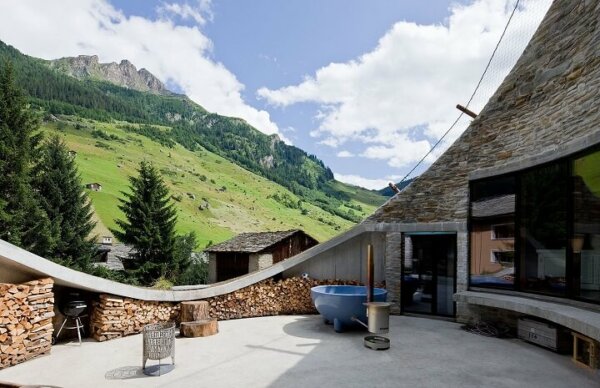
Villa Vals, Switzerland.
SeARCH and CMA: www.search.nl
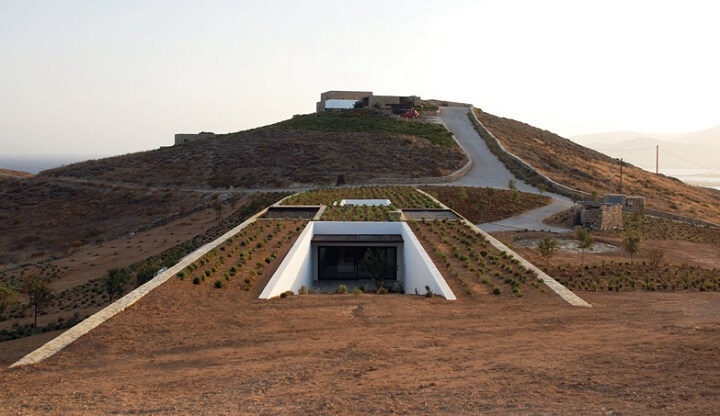
Aloni, Antiparos Island, Greece.
Deca Architects, 2005-2008.
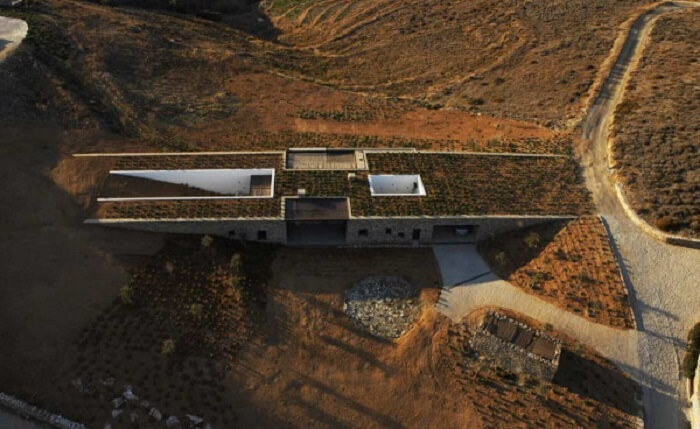
Aloni, Antiparos Island, Greece.
The design of the house is a dual response to the particular topography of the site and to the rural dry-rubble stone walls that define agricultural land on the ‘Cycladic Island’. The homes mass is imperceptible within the broader landscape of the island. The house is protected from the elements yet is full of natural light. Deca Architects, 2005-2008.
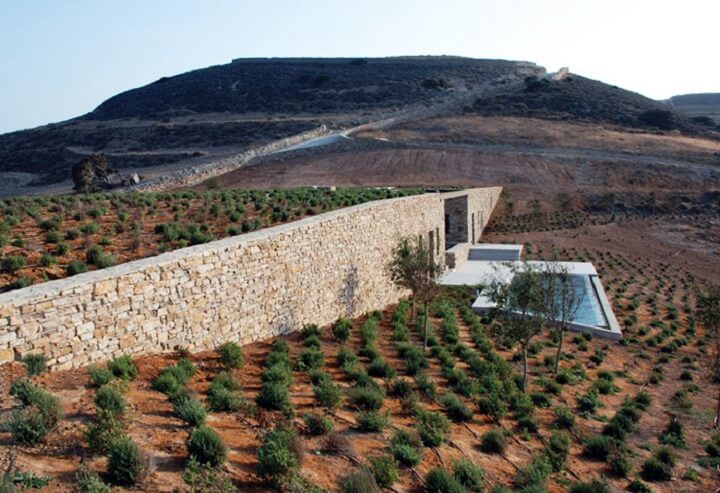
Aloni, Antiparos Island, Greece.
Deca Architects, 2005-2008.
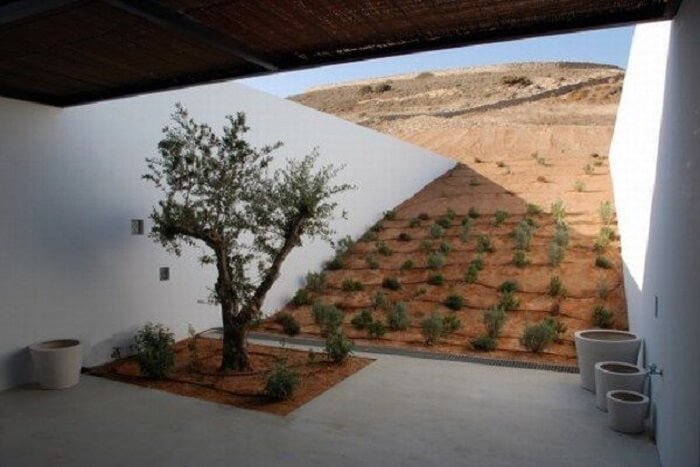
Aloni, Antiparos Island, Greece.
Deca Architects, 2005-2008.
A Nebraska couple turned an abandoned missile silo into an underground home. It was ruined, with rodents and pigeons living inside. They have a backup electrical system that can be charged with wind power. They grow tomatoes, garlic, potatoes, and green beans in an underground greenhouse. The walls are two feet thick—four feet thick in some places. The place where the missile was held is now the couple’s garage. They’ve covered the ground with wooden flooring and plastic turf.
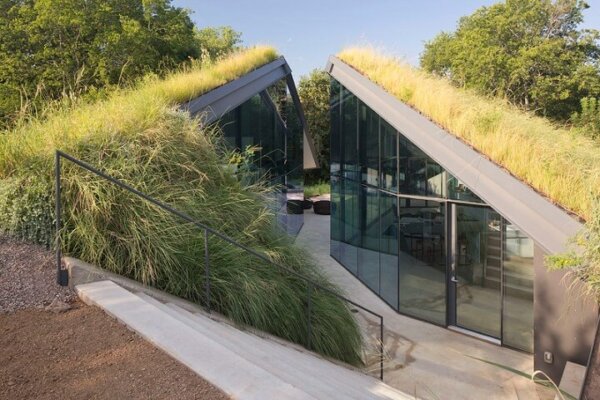
Edgeland House in Austin, Texas, is located on a rehabilitated brownfield site and is a modern re‐interpretation of one of the oldest housing typologies in North America, the Native American Pit House. The Pit House, typically sunken, takes advantage of the earth’s mass to maintain thermal comfort throughout the year. Like this timeless dwelling, Edgeland House’s relationship to the landscape both in terms of approach as well as building performance involves an insulative green roof and a 7‐foot excavation‐ gaining benefits from the earth’s mass to help it stay cooler in the summer and warmer in the winter. The home is broken up into two separate pavilions, for the living and sleeping quarters, and requires direct contact with the outside elements to pass from one to the other. Architects: Bercy Chen Studio
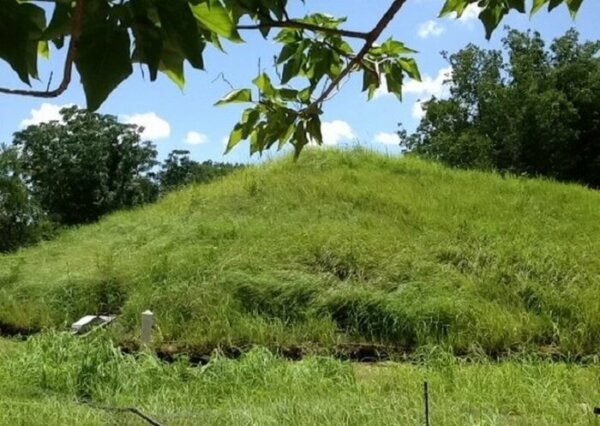
Edgeland House in Austin, Texas. Architects: Bercy Chen Studio
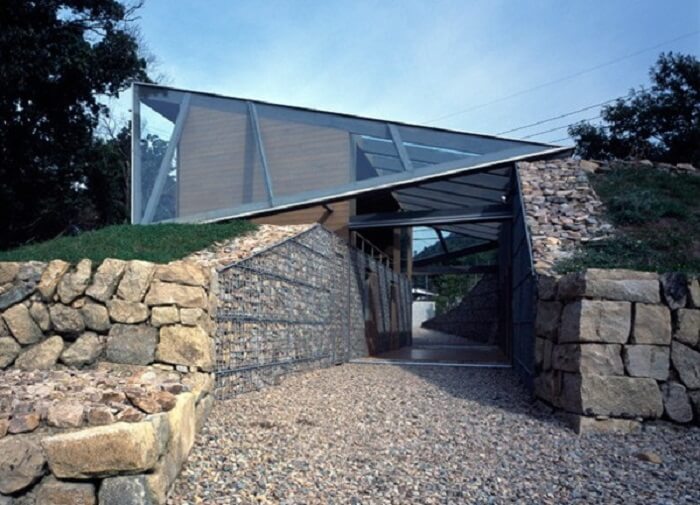
Base Valley House, Japan. Architect Hiroshi Sambuichi believes good design is first and foremost about getting the balance between the building and the earth, right. He sometimes spends up to a year performing on-site observations before he begins to design a project. “A close examination on how changing wind directions and intensities in daylight influences the site, enables me to understand what kind of architecture is really needed on each location”, explains Sambuichi. His favorite indigenous materials are stone, Japanese cypress and chestnut wood. Via: wallpaper.com
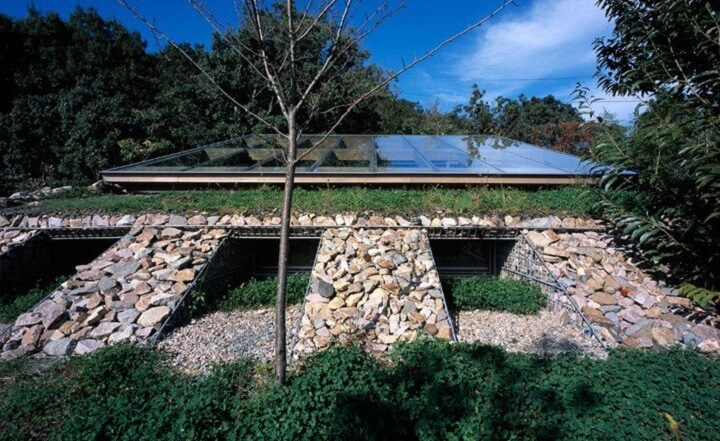
Base Valley House, Japan.
Via: wallpaper.com
In this short video, Wayne Martin shows how he turned a shipping container into an underground cellar or shelter. (He turned his into a wine cellar). The video shows the necessary depth of the hole, the placement of the sump-pump, the building of the concrete stairs, the framework that supports the forms around the top of the shelter, the framing below to support the structure, and the intakes for utility wiring. Then, it shows the concrete being poured atop the structure, and how to stucco the bar walls. Total cost of the project: $12,500.
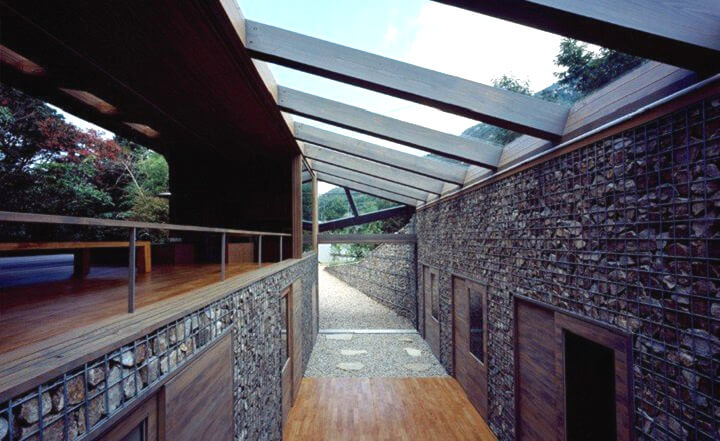
Base Valley House, Japan.
Via: wallpaper.com
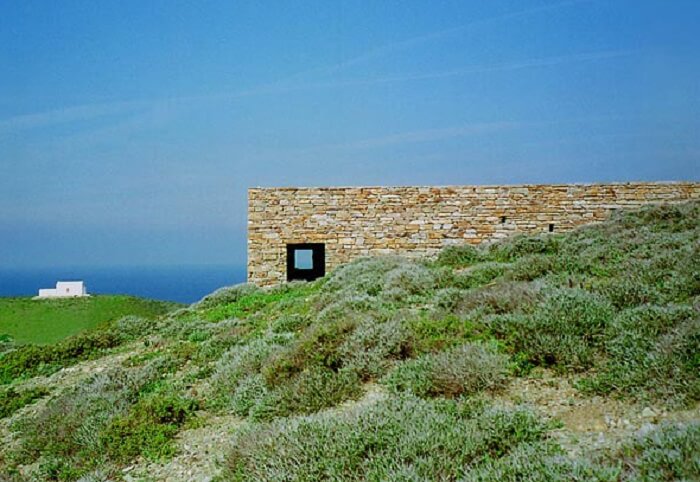
Underground Home in Greek Isles by Deca Architecture. Close to indestructible. Another underground project by Deca Architecture under construction: adproperties.gr
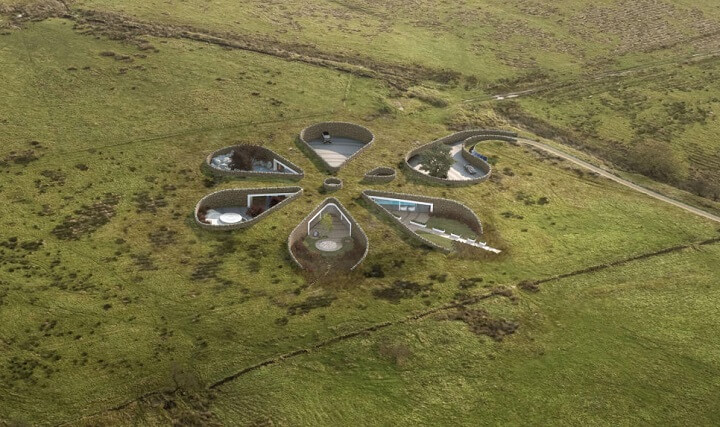
Bolton Eco-House. “The first zero-carbon property in the North West of England. The owner was passionate about preserving the natural beauty of this area. The four-bedroom, single-storey family home is deliberately embedded into the contours of the Pennine hillside to minimise the impact on the surrounding moorland and has a roof of flora and meadow grasses which flows seamlessly over the property and into the landscape. It has been designed to consume less energy than it uses; a ground source heat pump, photovoltaic panels and a wind turbine will generate on-site renewable energy. The positioning and orientation of the property were carefully considered and the home is to be built using locally sourced building materials and traditional construction methods.” makearchitects.com
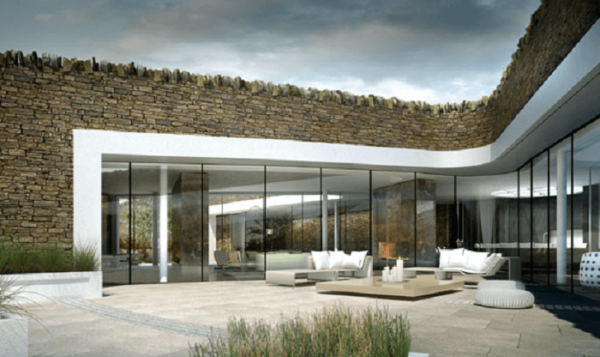
Bolton Eco-House.
makearchitects.com
This is just crazy—a 5,200 square foot home built 25 feet underground, just 3 miles from the Las Vegas strip. It was built in the 1970s by a wealthy owner terrified of nuclear war. It has a light system that replicates day and night, a sauna, even a grill with a ventilation system to make it safe. At time the video was made the house was on the market for $1.7 million.
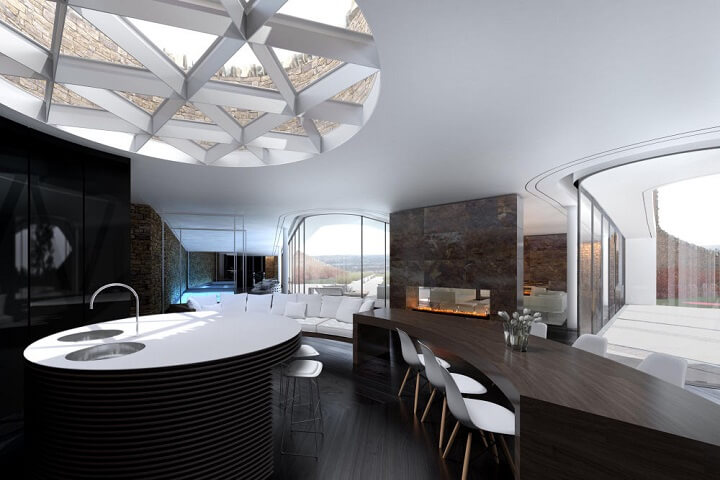
Bolton Eco-House.
Proposed for former captain of the Manchester United football team, Gary Neville. makearchitects.com

Partially subteranean, partially above ground.
www.futuretechnology500.com
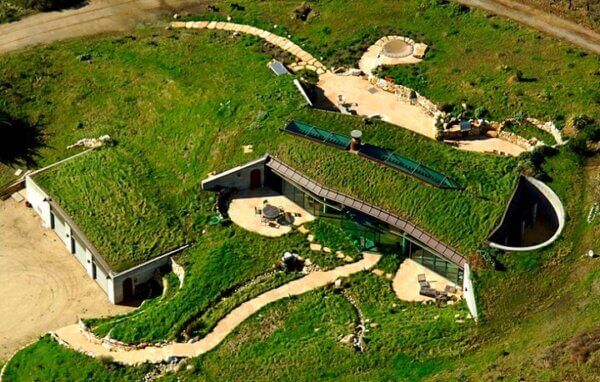
Earth sheltered home, Big Sur, California.
The Cooper Point House by organic architect Mickey Muenning, who has been building eco-buildings for over 30 years in Big Sur, California, is completely off-grid and powered by solar. The aerodynamic home reduces resistance to winds that, on occasion, blow more than 100 miles per hour. www.solaripedia.com
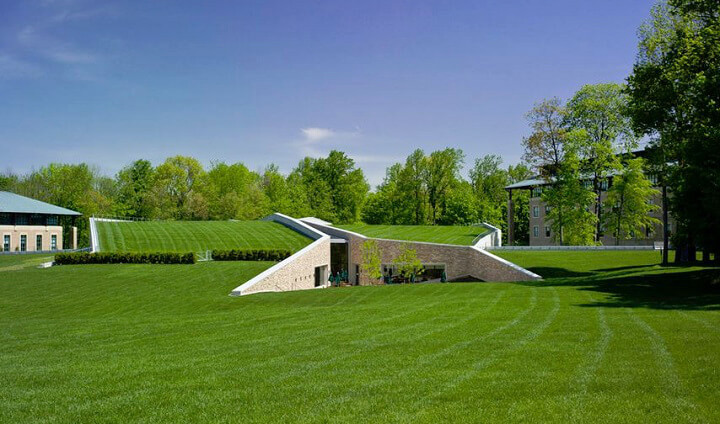
Becton Dickerson Campus, New Jersey.
A fusion of built structure and land form where the resultant architecture is well hidden and the landscape preserved. Architects: RMJM. More info: www.archdaily.com
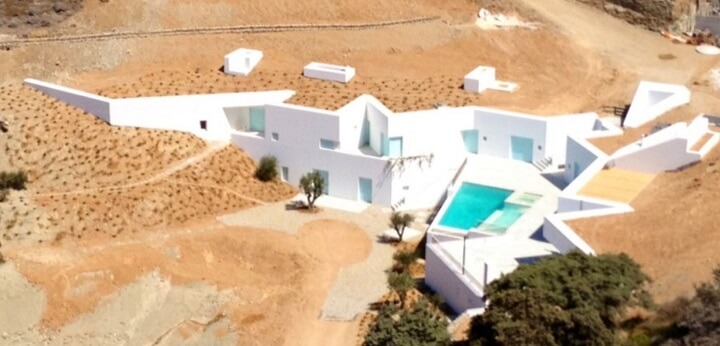
Ktima House.
Designed by Architects Camilo Rebelo, Susana Martins. The location of the house is linked with the topography and designed for the most impressive views. camilorebelo.com
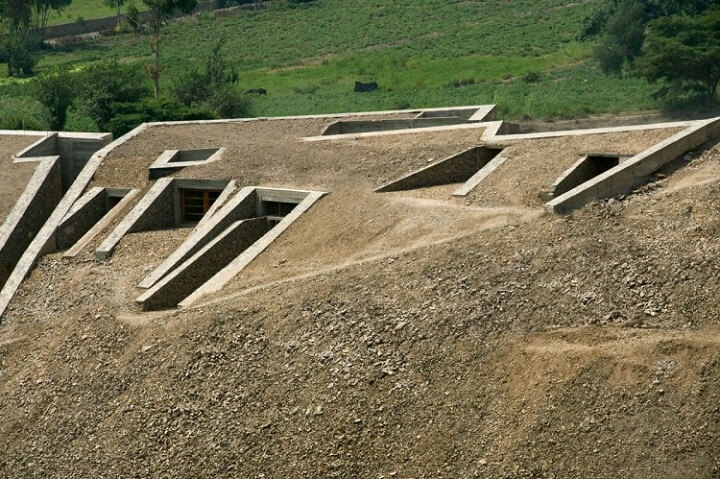
Underground home in Peru.
Longhi Architects, Pachacamac, Peru.
Lots more: www.archdaily.com
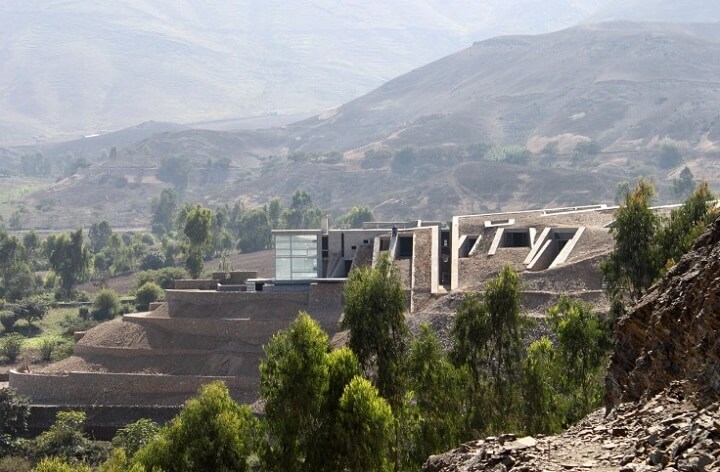
“A hill in Pachacamac, located 40 km south of Lima near Peru’s coast, is the site for the retirement home of a philosopher. The response to the site’s conditions was to bury the house, trying to create a balanced dialogue between architecture and landscape, where inside / outside becomes a constant interpretation of materiality with strong sense of protection and appreciation of the dark and the light. A glass box sticks out of the hill symbolizing architectural intervention on untouched nature.” archdaily.com
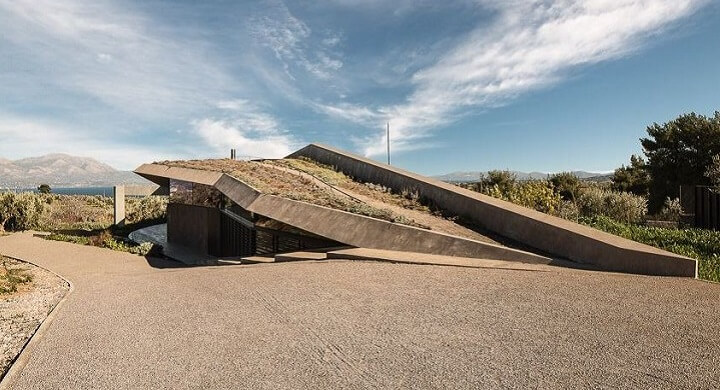
Underground House in Sikamino, Attica, Greece. Architects: Tense Architecture Network. archdaily.com
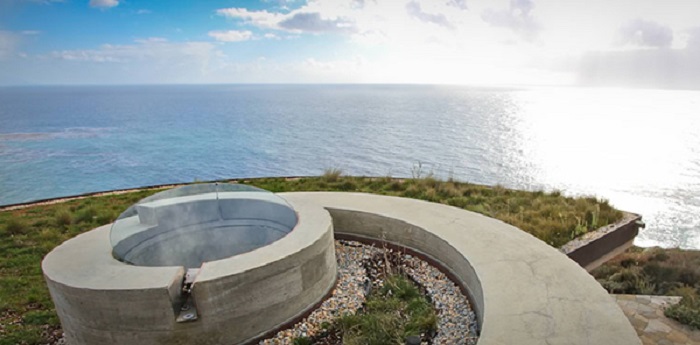
Abalone House. Big Sur, California.
Architect: Thomas Cowen.
ranacreekdesign.com

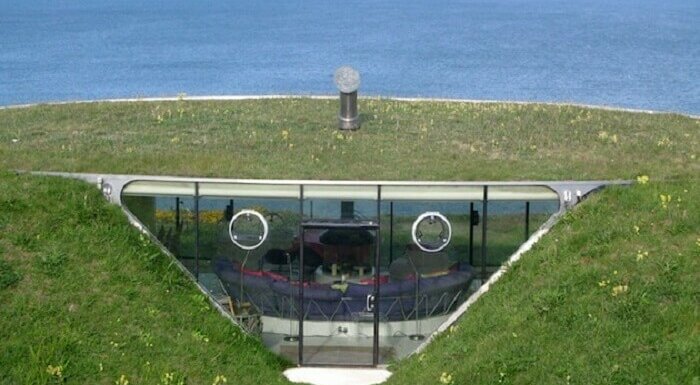














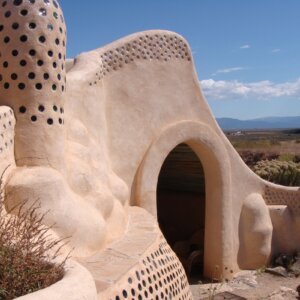

























if only we could enjoy such beautiful unobstructed views all the time! Fantastic and thoughtful architecture!
This is very nice. This is one of the housing systems for man and nature to co-exist.
We must stop destroying our land.
The sad thing is that all the homes destroyed by tornados recently will be built the same way just like the Jersey Shore rebuilt after Sandy.
More deaths will be required before it sinks in that some major concrete and steel in shapes that work with winds is the approach to take.
These are clearly not built anywhere where the local planning authority dictates what can and can’t be built, where it can be built, and how it must be built. I wish you would educate planning authorities in places like the UK and Ireland to understand that building with the landscape in times of diminishing resources, climate change, and increasing population must take precedence over so called ‘traditional aesthetics.’
Wonderful ideas. This is how home SHOULD be built. If I was to start again I would want an earth home. We at least turned our present home to make the most of the sun. The sun and weather in general is ignored with 90% of home built in the USA.
This is the way we should have been building from the beginning till now.
Beautiful ‘Creations’ !